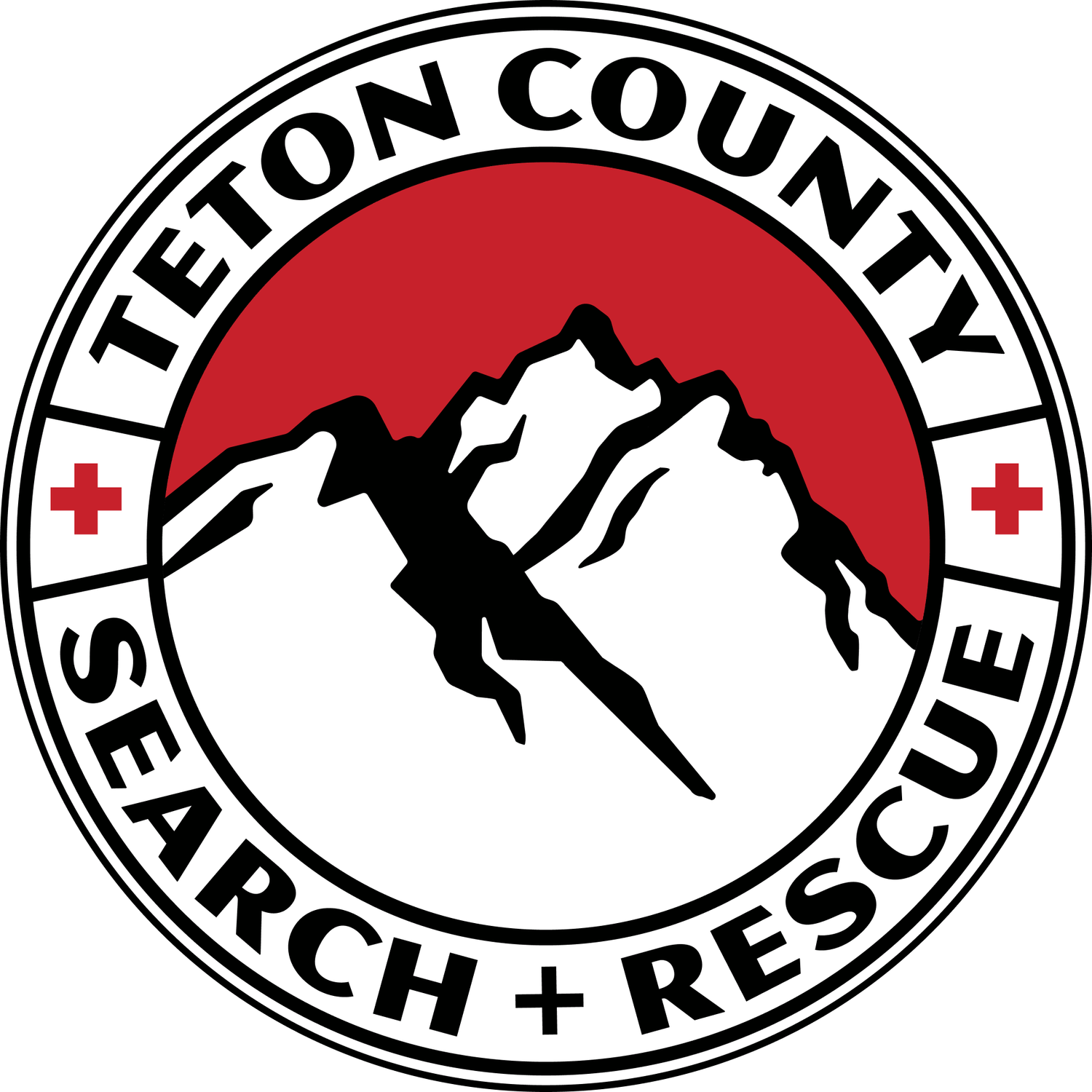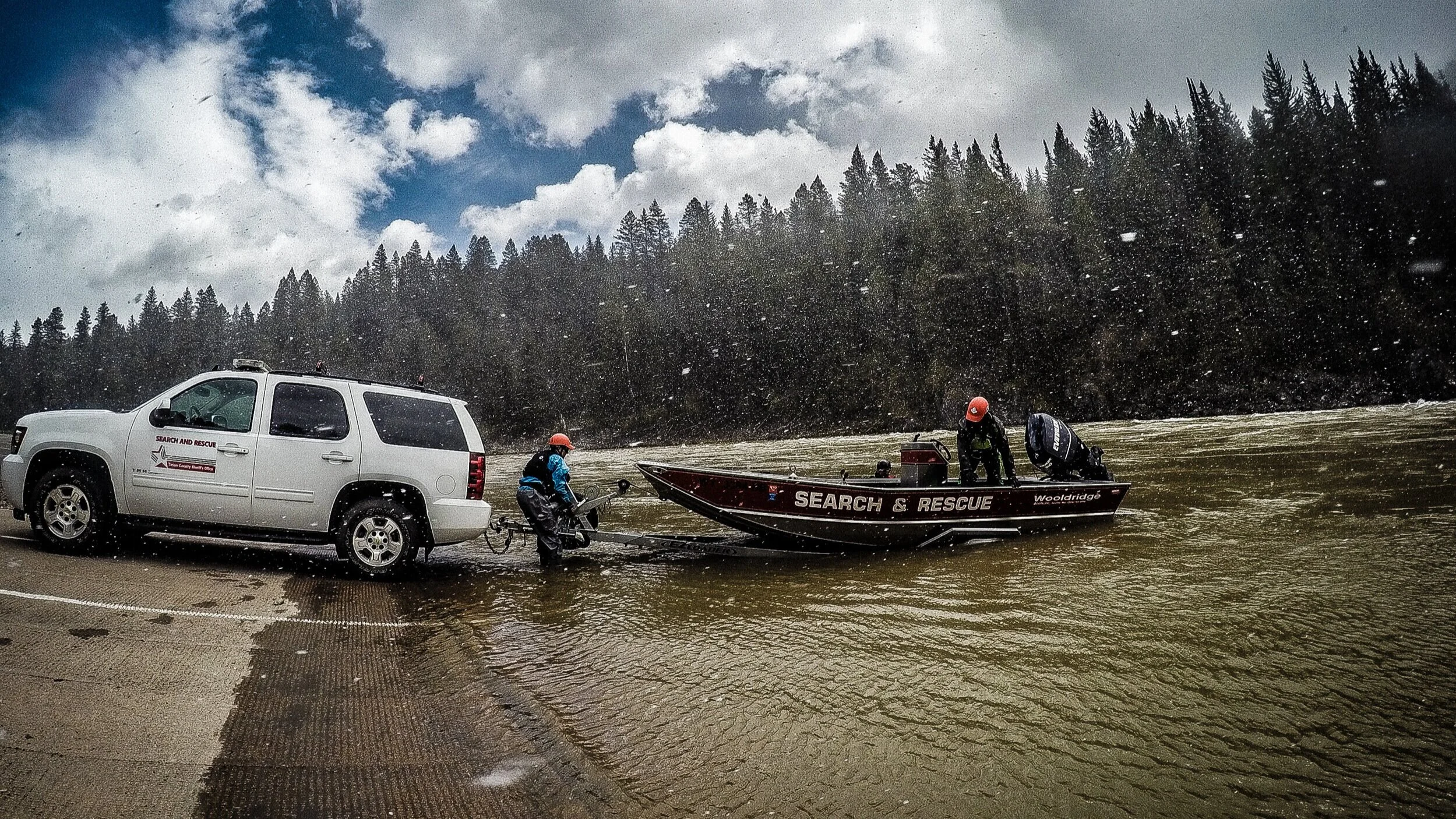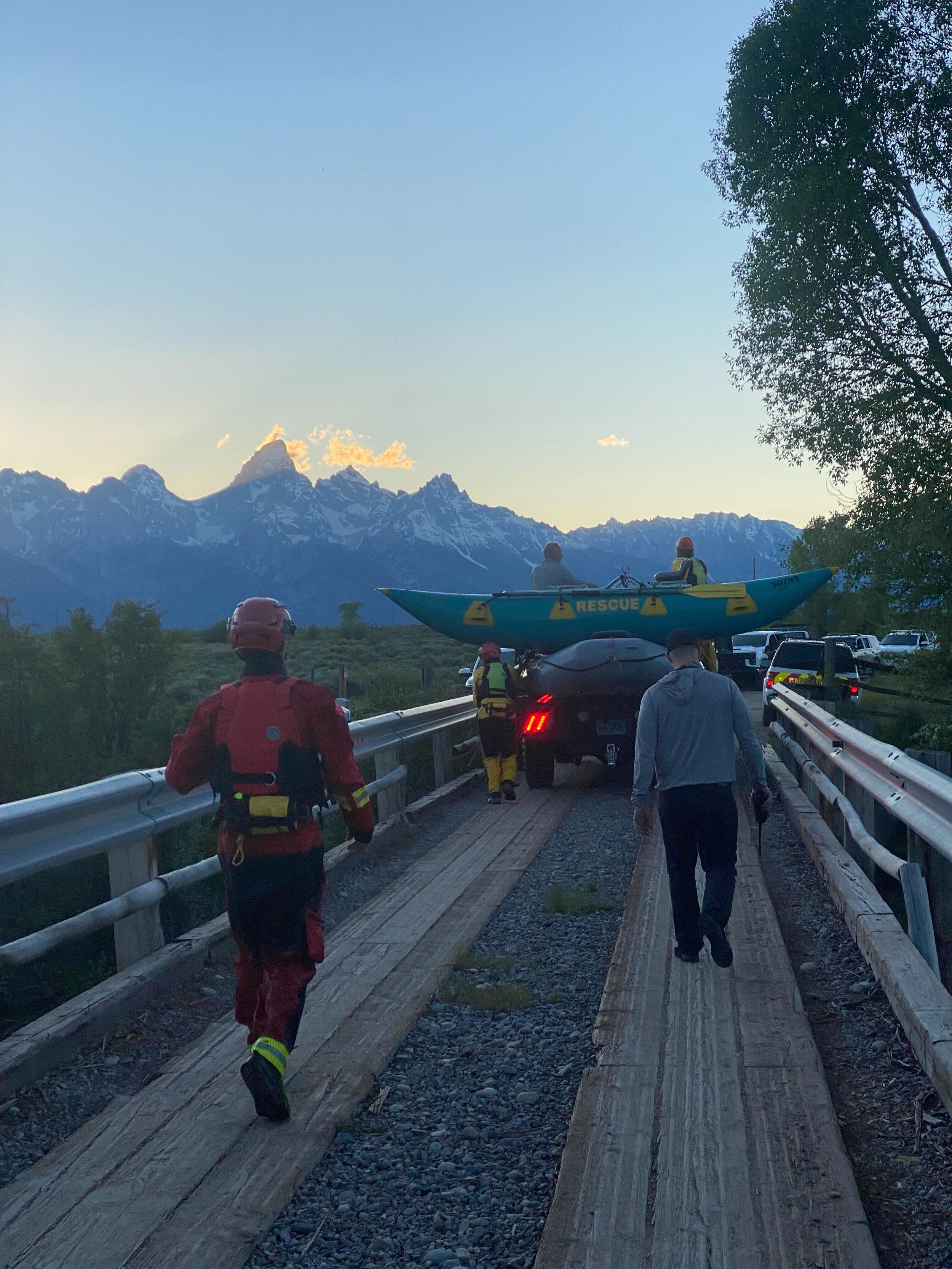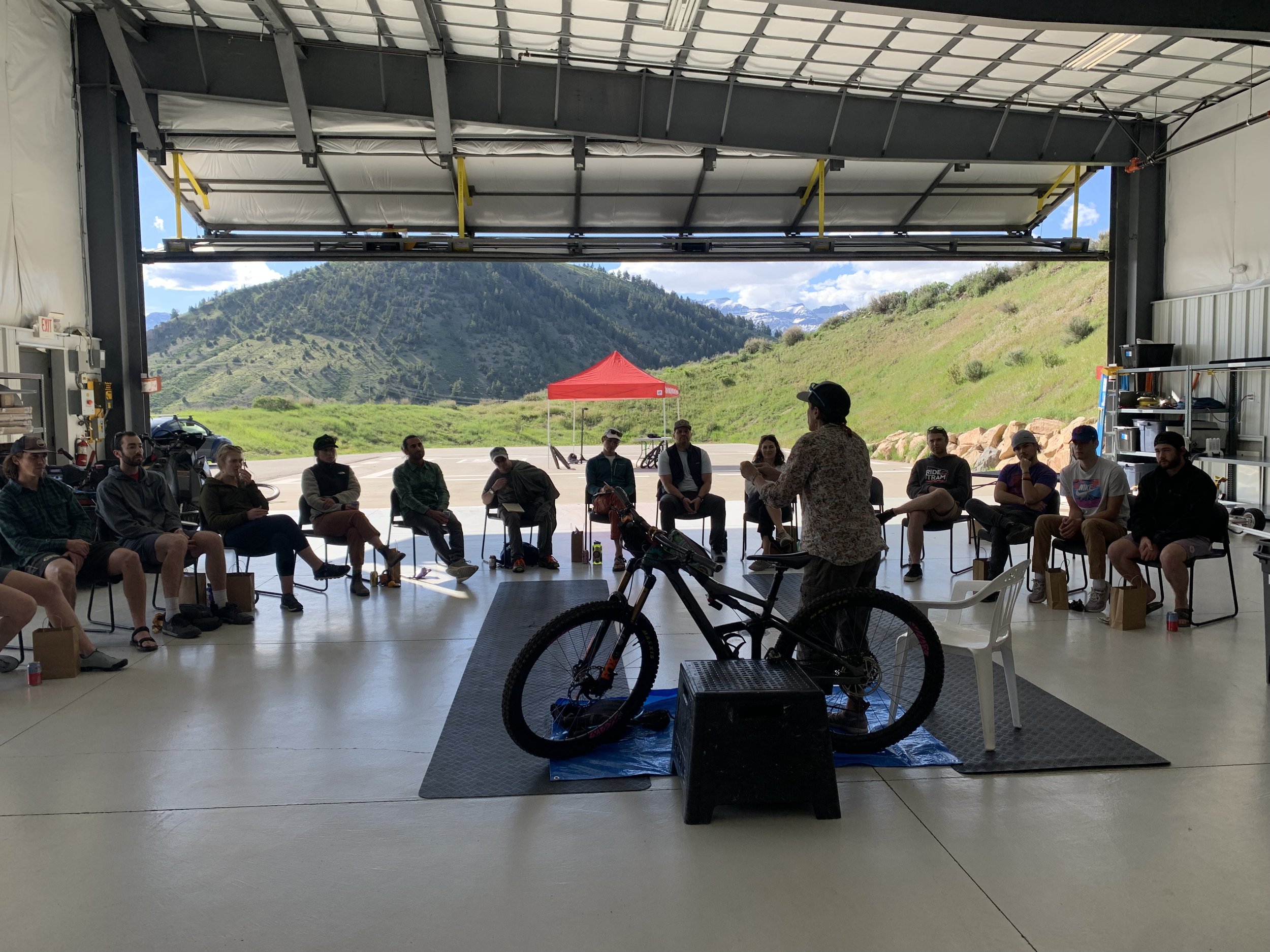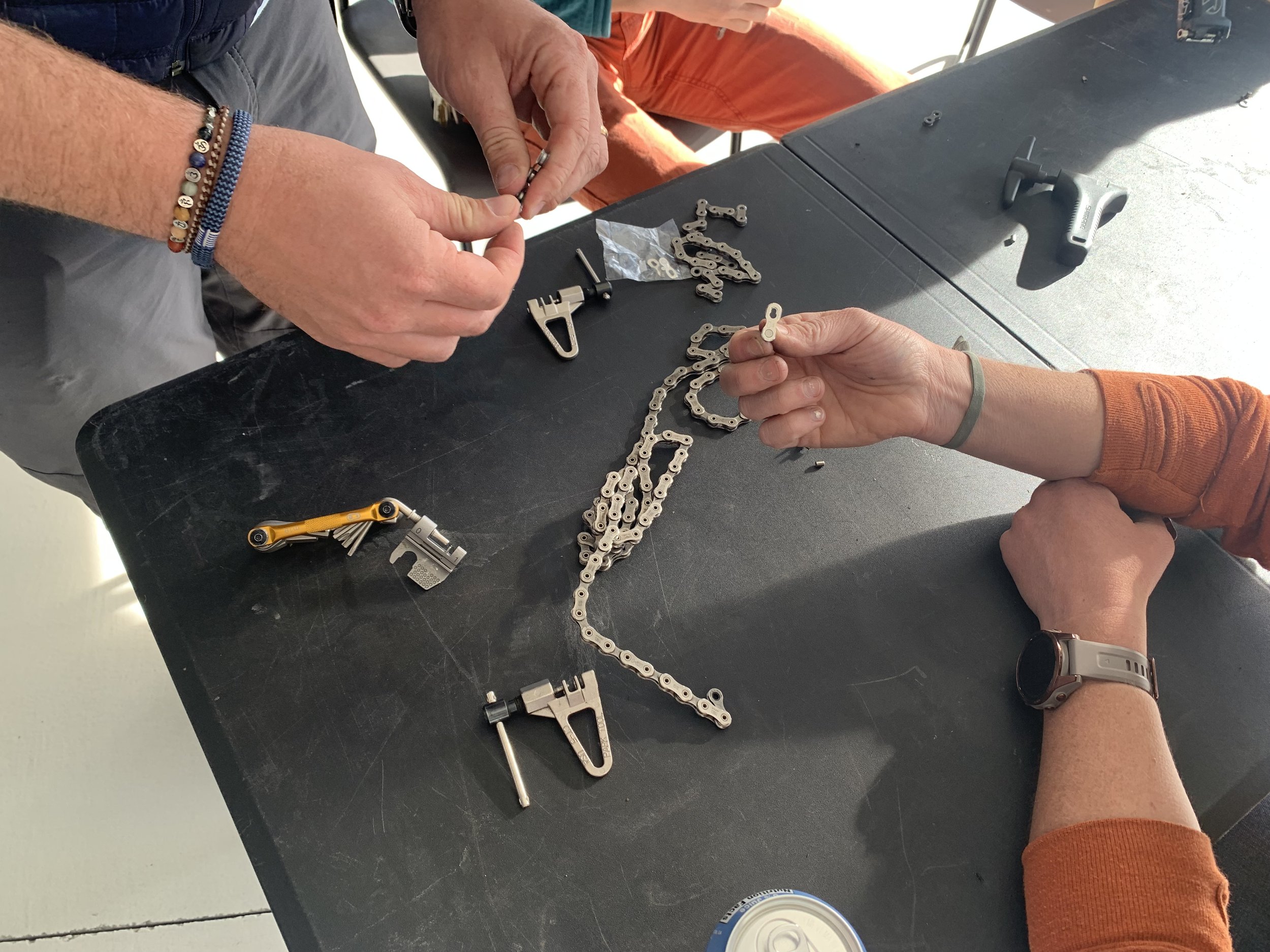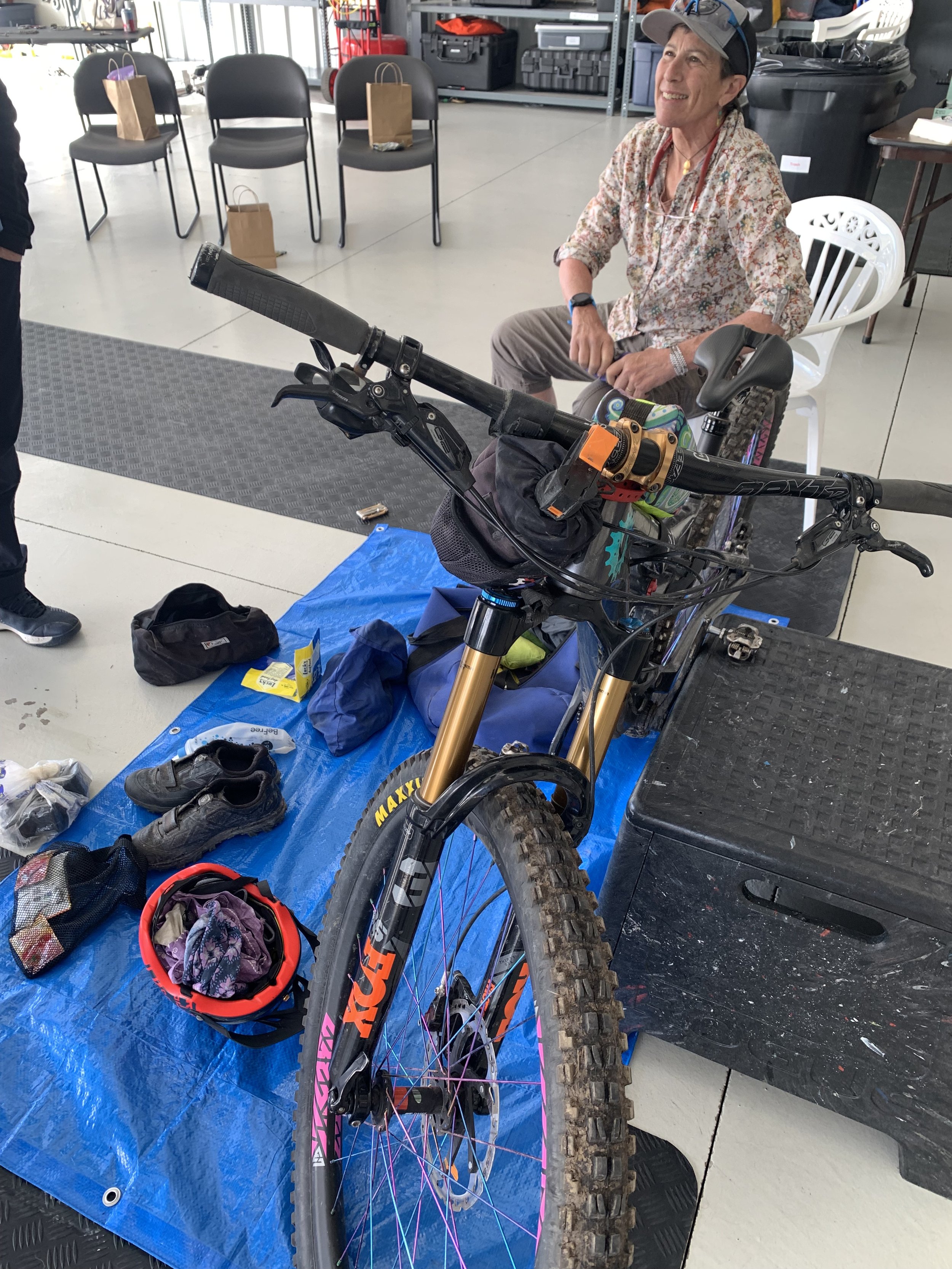Jackson, Wyo. — Just before 6 p.m. on Tuesday, June 21, Teton County Search & Rescue responded to a paddling accident on the Gros Ventre River. The emergency call reported that a pair of two-person catarafts had launched onto the whitewater stretch below Lower Slide Lake, and that one of the crafts had flipped near the rapid known as Hermit. One person was able to recover and climb back onto the craft, while the other continued downstream. The remaining members of the party attempted to chase their companion down the river, but were unable to retrieve him.
TCSAR volunteers search for a missing paddler on the Gros Ventre River on June 21, 2022. Photo: TCSAR
TCSAR volunteers responded to the site with swiftwater teams on foot and in rafts, and deployed an aerial drone. Grand Teton National Park dispatched a team of Jenny Lake Rangers and the interagency helicopter due to the accident site’s close proximity to the park boundary. Teton County Sheriff Deputies also responded, as did many recreational river users who were already on scene.
The man was reportedly last seen near a large boulder about a quarter mile upriver from the park boundary at a sharp bend known as Jumping Rock. SAR volunteers probed the area but were unable to locate the missing person. Shortly after, a spotter at Jumping Rock saw the man floating downriver. He was unresponsive.
The helicopter was able to follow the man as he floated downriver and eventually became hung up on a log jam about a mile downriver from Jumping Rock. TCSAR volunteers managed to reach the man and bring him to shore. Tragically, he did not survive. His party was visiting from out of state and had been well equipped, prepared and experienced. The man was wearing a PFD.
Photo: TCSAR
This three-mile stretch of whitewater in question is categorized as Class IV and is the most demanding, accessible whitewater stretch in Teton County. On Tuesday, it was flowing above average at about 2,000 cfs, or 2.5 feet. Local boaters characterize the current level as the low side of medium, but the stretch is very fast with few eddies. The numerous rapids were formed by the Gros Ventre Slide from 1925 and ensuing flood, which created sharp, angular rocks that make any swim especially hazardous.
TCSAR extends its sincere condolences to the deceased man’s family and friends. The team is also grateful for the assistance from the numerous different agencies and boaters who helped in the response.
